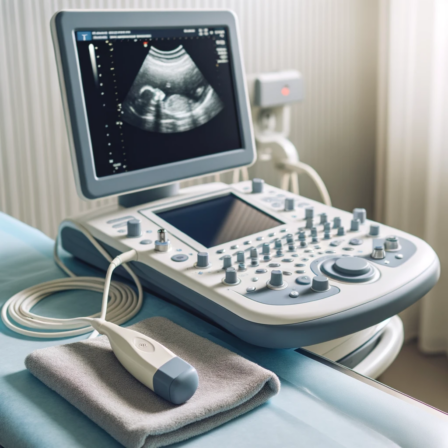A prostate ultrasound is a diagnostic medical procedure that uses sound waves to create an image of the prostate gland and the surrounding tissues. This procedure, also known as transrectal ultrasound (TRUS), is commonly used to evaluate the presence of prostate abnormalities.

Prostate Ultrasounds are a quick and easy test to check the size and shape of your prostate.
How It Is Performed
The procedure is typically performed by the urologist or a tech. It involves the insertion of an ultrasound probe into the rectum (up the bottom) which lies next to the prostate. This probe emits sound waves that bounce off the prostate tissue, and the echoes are converted into an image by the ultrasound machine.
What to Expect
During the procedure, you will be asked to lie on your side with your knees bent toward your chest. The doctor will insert a lubricated, covered ultrasound probe into your rectum. You may feel pressure and some discomfort but usually not pain. The procedure typically lasts less than 5 minutes. No anesthesia or sedation is necessary for this ultrasound procedure.
Risks and Benefits
The risks associated with a prostate ultrasound are minimal. Some men may experience a small amount of bleeding from the rectum if they have hemorrhoids or anal fissures. We will be using a lot of lubricant for the procedure to minimize discomfort.
The benefits include its noninvasive nature, lack of radiation exposure, and its ability to provide detailed images that can guide biopsies and help in the diagnosis and treatment of various prostate conditions.
How to Prepare
Preparation for a prostate ultrasound may include:
- You may eat and drink prior to the ultrasound
- Take all your usual medications
- If you’re always very constipated, please have a good bowel movement the morning of the procedure. Some people may need to perform an enema to induce a bowel movement.
- You may be asked to drink water prior to the procedure to fill your bladder, which helps in obtaining better images.
- We will NOT be doing any biopsies of the prostate with the ultrasound as that is a separate type of procedure that requires different preparation. Click here to learn about prostate biopsies.
After the Procedure
Post-procedure, you may resume normal activities. Patients with severe hemorrhoids or a history of anal fissures, may experience temporary, mild anal discomfort and/or bleeding. Hemorrhoid creams and stools softeners may alleviate these symptoms.

